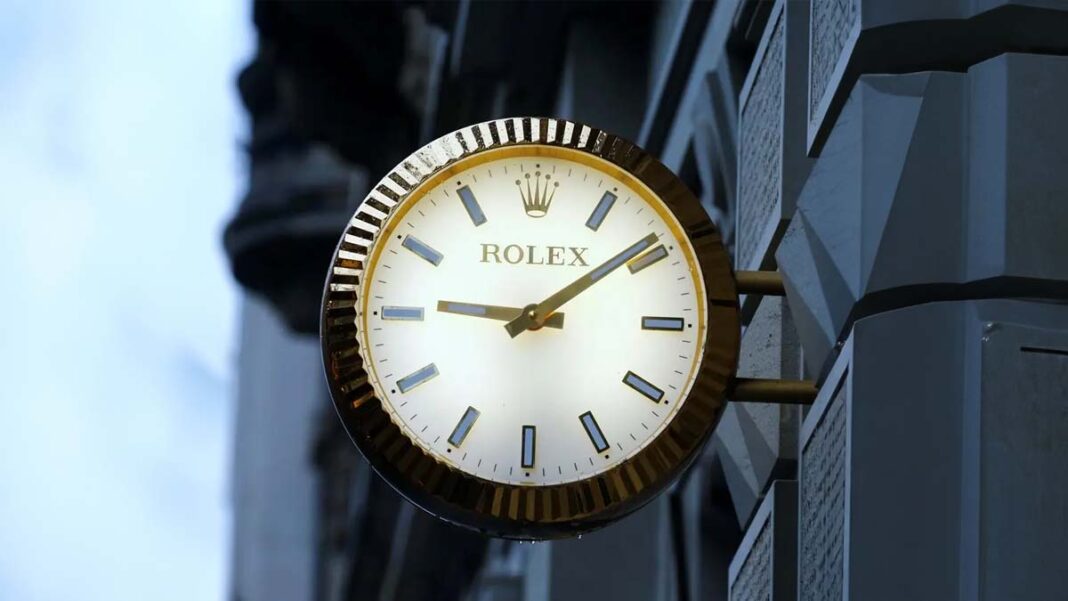The head of Rolex SA said viewing luxury watches as investments is dangerous following a surge in interest from speculators during the pandemic.
“I don’t like it when people compare watches with stocks. This sends the wrong message and is dangerous,” Chief Executive Officer Jean-Frédéric Dufour said in a rare interview with Swiss newspaper NZZ before the Watches and Wonders trade show that starts this week in Geneva.
Led by brands including Rolex, Patek Philippe and Audemars Piguet, prices for pre-owned watches rocketed to unprecedented levels in 2021 and early 2022 as speculators, boosted by low interest rates and soaring cryptocurrency values, snapped up expensive Swiss timepieces.
But secondary market prices have fallen sharply in the past two years amid weaker economic growth and higher interest rates. The Bloomberg Subdial Watch Index, which tracks prices for the 50 most traded timepieces by value, has declined 40% in the past two years.
Rolex is the biggest Swiss watch brand and dominates the industry with an estimated 30% market share. Known for its Datejust, Daytona and Submariner models, the Geneva-based company’s sales crossed 10 billion Swiss francs ($11 billion) for the first time in 2023, according to estimates by Morgan Stanley.
Secondary Market
The Rolex CEO confirmed the Swiss watchmaker, which is controlled by a foundation named for company founder Hans Wilsdorf, pays close attention to secondary market prices. He said “very well known and successful brands,” are always in the minds of consumers and are still doing well despite a downturn in demand.
“This can also be seen in the fact that the resale value of these watches does not decrease,” he told the newspaper.
In a major shift in strategy, Rolex began issuing certificates of authenticity for its used watches in late 2022 through a so-called certified pre-owned program. The authenticated used watches are sold through its network of authorized dealers including Switzerland’s Bucherer, which Rolex bought in 2023 in its biggest-ever acquisition.
Dufour, who has led Rolex since 2015, told NZZ that he expects 2024 to be a difficult year for the Swiss watch industry as demand slows from the peak.
Bloomberg News reported in December that the surge in retail demand for the top Swiss watchmakers’ products had slowed significantly after three years of frenzied buying.
Smaller Brands
The Rolex CEO said the slowdown will hit sales of smaller watch brands hardest. “The pendulum is now swinging in the other direction, and it is naturally more pronounced for the less established brands,” he said. “While they may have seen a 20% increase in sales during the upswing, they may now experience a 15% decline.”
“For the big brands, the fluctuations are smaller,” Dufour added.
Watchmakers tend to overproduce during good times and when markets weaken, retailers come under pressure to cut prices. “This is extremely problematic because discounts damage emotional products like ours,” Dufour said.
The Rolex boss said the strong value of the Swiss franc against other currencies is also adding to pressures on the industry, as is the rising cost of raw materials such as gold.
“The increased interest rates are also affecting people’s spending mood, and the geopolitical situation isn’t helping either,” he said.













